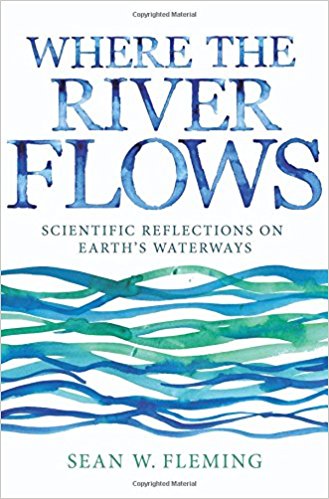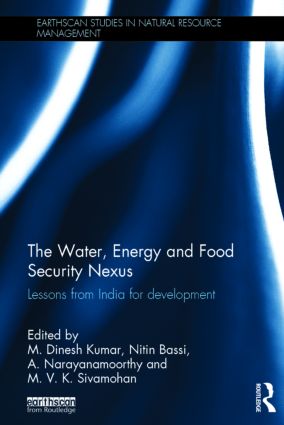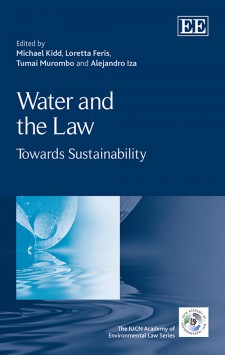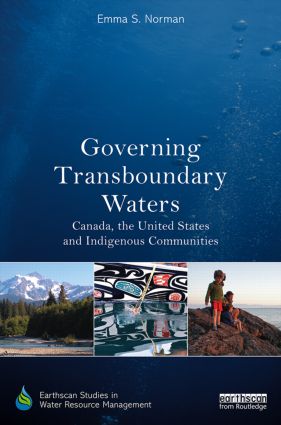Where the River Flows: Scientific Reflections on Earth’s Waterways
Reviewed by Sudhirendar Sharma
This review was first published in Current Science, July 10, 2017.
While the United States may have leveled off its water use to 1970 levels, in spite of both population and economic growth, the health of its rivers continues to remain a concern.
by Sean W. Fleming, Where the River Flows: Scientific Reflections on Earth’s Waterways, Princeton University Press, 2017, 216 pp.
Its global prevalence notwithstanding, the state of water in nature reflects our inadequate understanding of its intricate flow dynamics. Despite its abundance, access to water eludes millions of people, and the stress on the ecosystems involved continues to grow. More than one billion people lack access to clean water, and in the near future, the global demand for water will be twice what it is now. With no substitute for this life-nurturing fluid, it is more important than ever that we ask the right questions so we can get past the current muddle.
All rivers are alike in the broadest sense, but they have different meandering curves, diverse aquatic fauna and distinct morphological features. Unraveling this distinctiveness and the (unknown) variables that contribute to it are the challenges that confront hydrologists. Existing watershed models are insufficient. Indeed, many of the best modelers don’t rate their results too highly. Part of the problem, in the words of Belgian Nobel Laureate Ilya Prigogine, rests on our innate desire to simplify complexity. Unfortunately, reducing elaborate systems into simpler subsystems doesn’t necessarily help: we end up learning more about less. Such an approach is particularly unhelpful when we are trying to understand river hydrology. The uncertainty involved is a function of a great many environmental and social factors that shape stream flow and underlying aquifers.
Sean Fleming’s Where the River Flows calls for a paradigm shift. He favors a radical departure from the usual disciplinary thinking; indeed, since rivers are a reflection of the profound interrelationships between landscapes, ecosystems and societies, no disciplinary perspective can adequately address their complex dynamics. He believes that fractal mathematics along with chaos and information theory can be used to generate new insights into the overall patterns of river systems. As anthropogenic impacts on the natural environment (like climate change) accelerate, there is a need for both finer detailed forecasts (e.g., will my farm get rain next week?) and big picture understanding (e.g., will the river topple its banks this coming season?). New insights in both dimensions are critical to understanding the common but differentiated patterns that each river generates in its unique geomorphological setting.
Unfortunately, a counter narrative persists, making it harder to get a better sense of river hydrology. Damming, diversion and contamination pose formidable challenges, beyond the normal ecological complexity, to figuring out how to sustain healthy stream flows for human welfare and ecosystem survival. Be it the Mississippi, Ganges or Yangtze, river degradation has thrown off balance the delicate equilibrium between ever-increasing human populations and their relentless aspiration to stay adequately watered. The United States may have leveled off its water use to 1970 levels in spite of both population and economic growth, but the health of its rivers continues to remain alarming. While every drop of water pumped from the Colorado river is used at least 17 times, which may sound like good news, the net impact of all that pumping on the Gulf of California has grossly disrupted the hydrological cycle. River water hasn’t reached the delta since 1960.
Fleming calls for an entirely new way of viewing the natural environment, suggesting that we need to process vast and complex information to reconceptualize and understand the dynamics of the natural environment. But can reams of hard data and new quantitative modeling techniques give us a better sense of river systems that are not only dynamic but also living entities? As the need for more accurate, precise and consistent forecasts move center stage in our dealings with the rivers, somehow cultural perspectives must also be included. It is not clear how we can convert human observations into actionable information.





